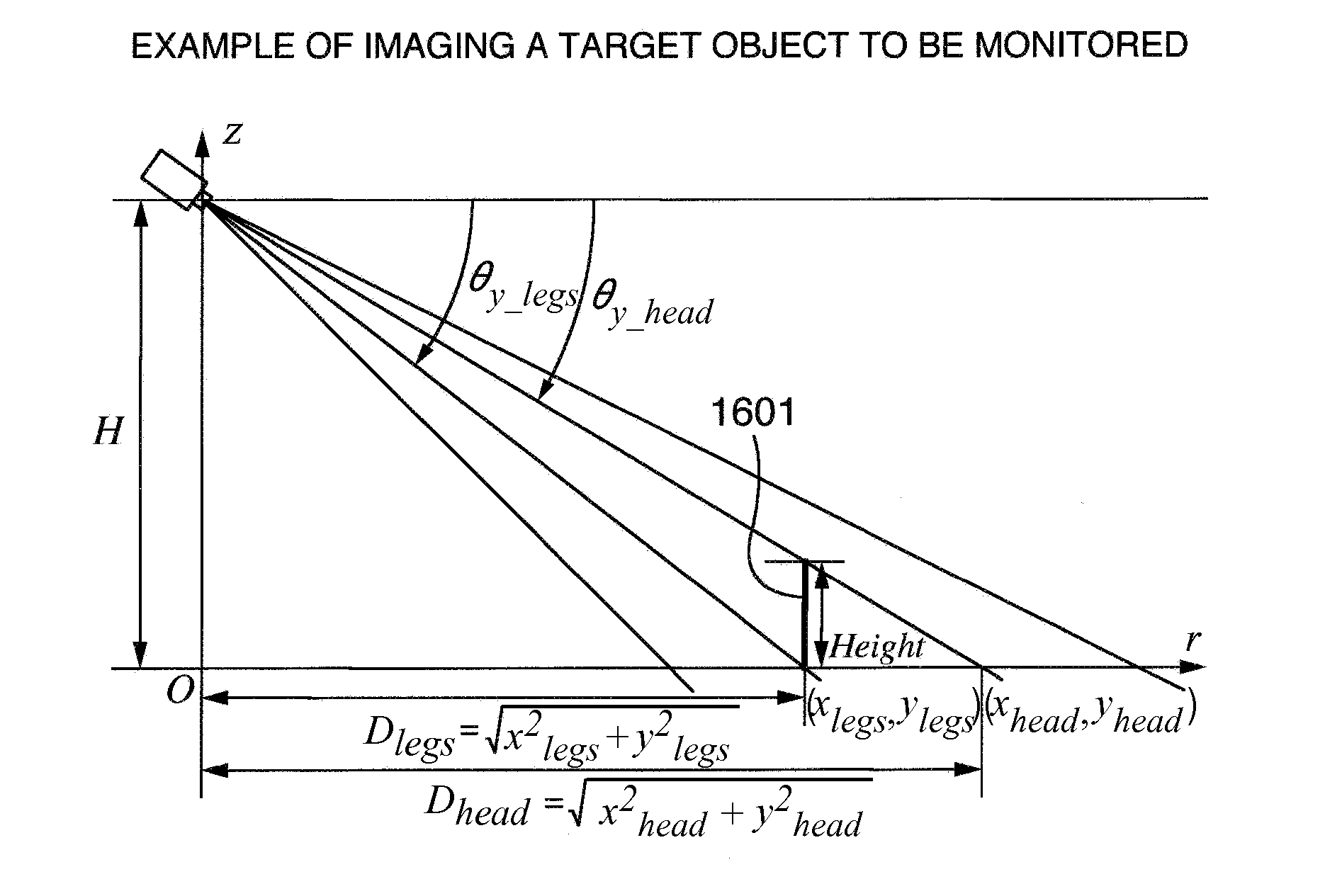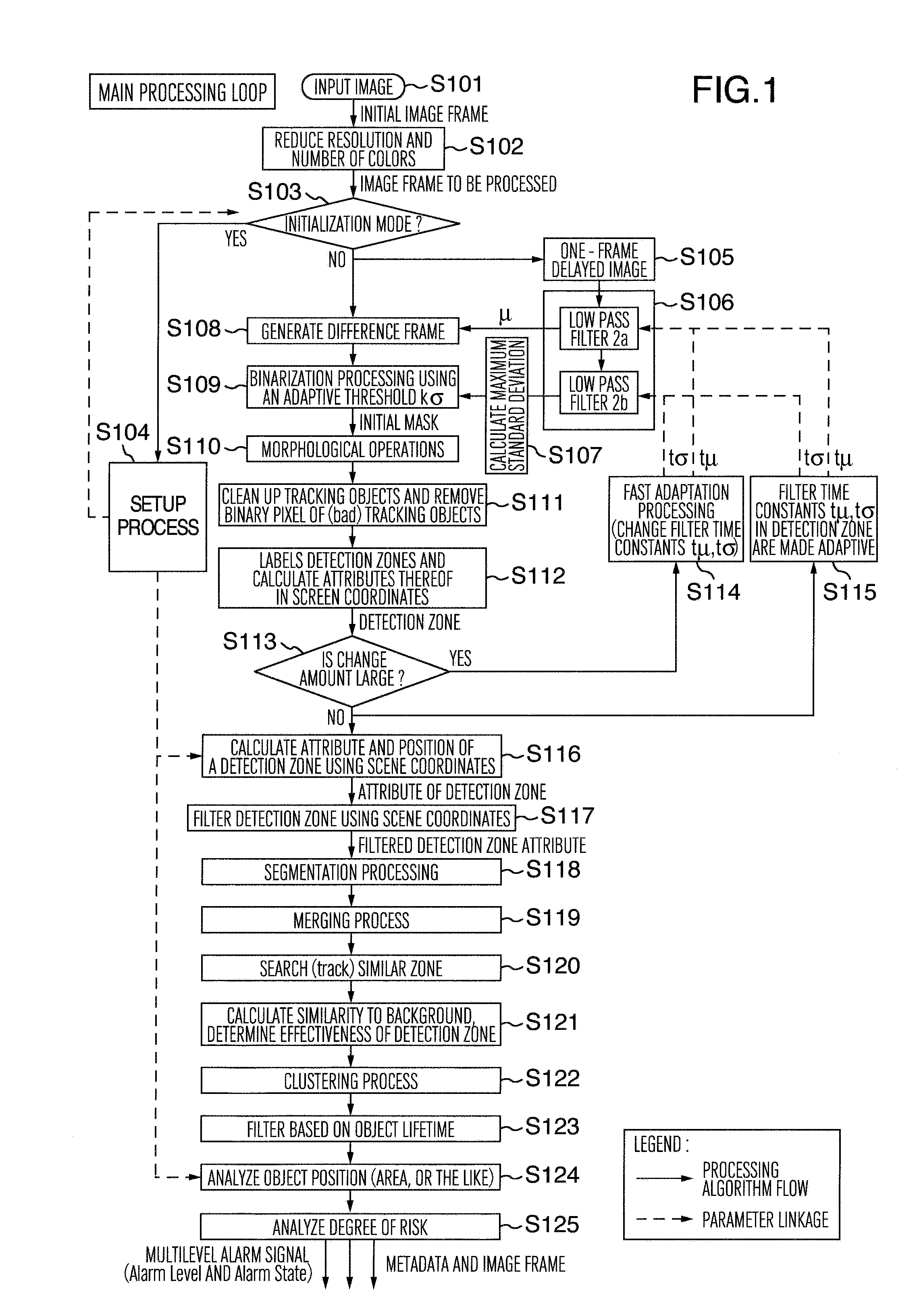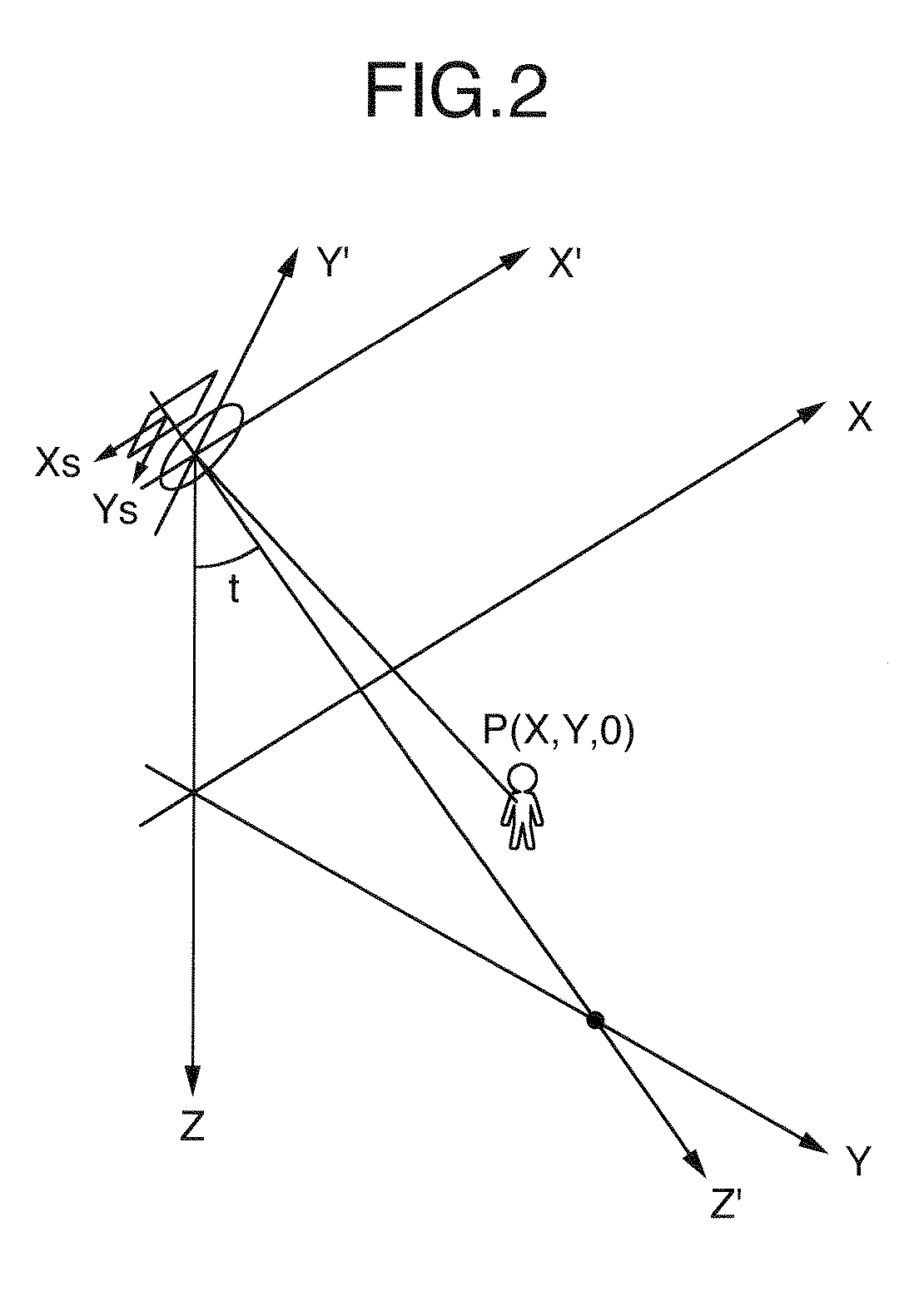Intrusion alarm video-processing device
a video processing device and intrusion alarm technology, applied in the field of intrusion alarm video processing devices, can solve the problems of inability to determine the actual size of an object, inability to update a background model in an appropriate pixel, and inability to accurately detect a shadow, etc., to achieve the effect of accurately detecting a monitored obj
- Summary
- Abstract
- Description
- Claims
- Application Information
AI Technical Summary
Benefits of technology
Problems solved by technology
Method used
Image
Examples
embodiment 1
[0057]First, the main terms used in the description of this embodiment are defined.
[0058]Current frame (image): one frame of image obtained from a video input in the current processing cycle Background frame (image): an image obtained by successively averaging (smoothing) the luminance value of each pixel within an image frame. These calculations are performed using a low pass filter 106a (described later).
[0059]Standard-deviation frame: an image obtained by successively averaging (smoothing) the variance of the luminance value of each pixel within an image frame. These calculations are performed using a low pass filter 106b (described later).
[0060]Frame difference (image): an image resulting from an image difference between the current frame and the background frame.
[0061]Binary frame (image): an image resulting from the binarization of a difference image frame, and is obtain by comparing the difference frame with a standard deviation frame for each pixel.
[0062]Foreground pixel: a ...
embodiment 2
[0125]An intrusion alarm video-processing device of Embodiment 2 differs from Embodiment 1 in that TSV (Temporal Spatio-Velocity) transform or the like is used for object tracking. The device of Embodiment 1 is preferable to detect an intrusion of a certain object (a vehicle, a boat, a person) into a place where there are usually no people, while the device of Embodiment 2 is intended to detect an object doing questionable behavior among ordinary objects passing by.
[0126]TSV transform is based on the three-dimensional Hough transform with regard to spatio-temporal images such as consecutive time sequence frames. In this embodiment intended to obtain the locus of an object, a linear Hough transform is used. That is, lines are detected from a pixel value space defined on the three dimensions of two spatial dimensions (the vertical direction and horizontal direction of an original image) and a time dimension. As the image to be TSV transformed (referred to as the initial detection imag...
embodiment 3
[0134]An intrusion alarm video-processing device of Embodiment 3 differs from Embodiment 1 in that a skeleton processing is performed in place of or in addition to the segmentation and merge processings of Steps 118, 119 of Embodiment 1. The skeleton processing includes a process to obtain shape information of the initial detection zone by a thinning process or skeleton processing with respect to the binary image, a process to extract main axes from the shape information, and a process to extract the axes of the object from the extracted axes.
[0135]An image skel (A) obtained by performing the skeleton processing to an arbitrary image A is expressed by Equation (22) below.
skel(A)=Yk=0K-1{er(A,kB)-open(er(A,kB),B)}(22)
Where, B denotes a structuring element (which is preferably circular), er (A, kB) denotes an operation of eroding A K-times with B, open (A, B) denotes an operation of opening A with B.
[0136]In this embodiment, as the image A, a binary image is used which is clipped with...
PUM
 Login to View More
Login to View More Abstract
Description
Claims
Application Information
 Login to View More
Login to View More - R&D
- Intellectual Property
- Life Sciences
- Materials
- Tech Scout
- Unparalleled Data Quality
- Higher Quality Content
- 60% Fewer Hallucinations
Browse by: Latest US Patents, China's latest patents, Technical Efficacy Thesaurus, Application Domain, Technology Topic, Popular Technical Reports.
© 2025 PatSnap. All rights reserved.Legal|Privacy policy|Modern Slavery Act Transparency Statement|Sitemap|About US| Contact US: help@patsnap.com



